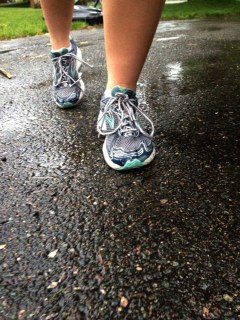As summer quickly approaches, the warm weather brings increased opportunities to go for a run. It also stirs up the endless debate among runners; which is better, barefoot running, or running with sneakers? Studies over the years have shown that both have many different benefits and disadvantages. According to running expert Tom Kelso, “barefoot runners tend to land on their forefoot or midfoot with their landing point closer to the body’s center of mass.” Running without shoes uses the natural shock-absorbing, spring-like mechanism of the muscles within the foot, ankle, knee, and hip. The impact with the ground is not altered by any excess material that a shoe provides. Junior Molly McConaughey prefers running without shoes. She said, “It just feels better on your feet.. It’s kind of fun to run against the norm.” This ideal strengthens muscles and tendons while also helping stretch the achilles tendon and calf muscle, which are constricted in sneakers. In conclusion, barefoot running can actually reduce injuries as you land in natural, unresolved manner as it is solely your foot and it’s natural arch.
On the downside, your foot’s stride does change from barefoot running to sneaker running. If you ran the same barefoot as you did in sneakers, it would hurt! This change in stride can cause pain as the nerves adjust and different muscles are strengthened. Ultimately, consistency is the key with running.
On the other side, running in shoes proves beneficial as well. With a plethora of running shoes, it is guaranteed to find a pair to accommodate each and every ankle and foot movement. Shoes provide protection against the hard surface that your feet pound against during a run, or even the tricky terrain that accompanies cross country running. They also give support to high or low arches and feet that over-pronate. Sophomore Meghan O’Toole loves running with sneakers. O’Toole said, “running with sneakers protects her feet and support her arches when they pound against the ground.” On the downside, Running with shoes adds extra weight to lift, and increases injury as you land on your heel, not the foots natural midfoot arch.
Getting the best of both worlds is easy as well. With the rising popularity in barefoot running, light trainers and racing flats have been invented. These shoes mimic barefoot running with extreme flexibility and almost zero extra weight. A few of the benefits of these modern day shoes are increased efficency and shorter ground contact. The shoes contain less cushion while still protecting your feet from the surface that you are running on. There is no evidence that heavy duty running shoes have reduced injury as well. All in all, running is a great way to get exercise and enjoy the beautiful weather of the summer. So maybe this summer try something new; try barefoot running!
